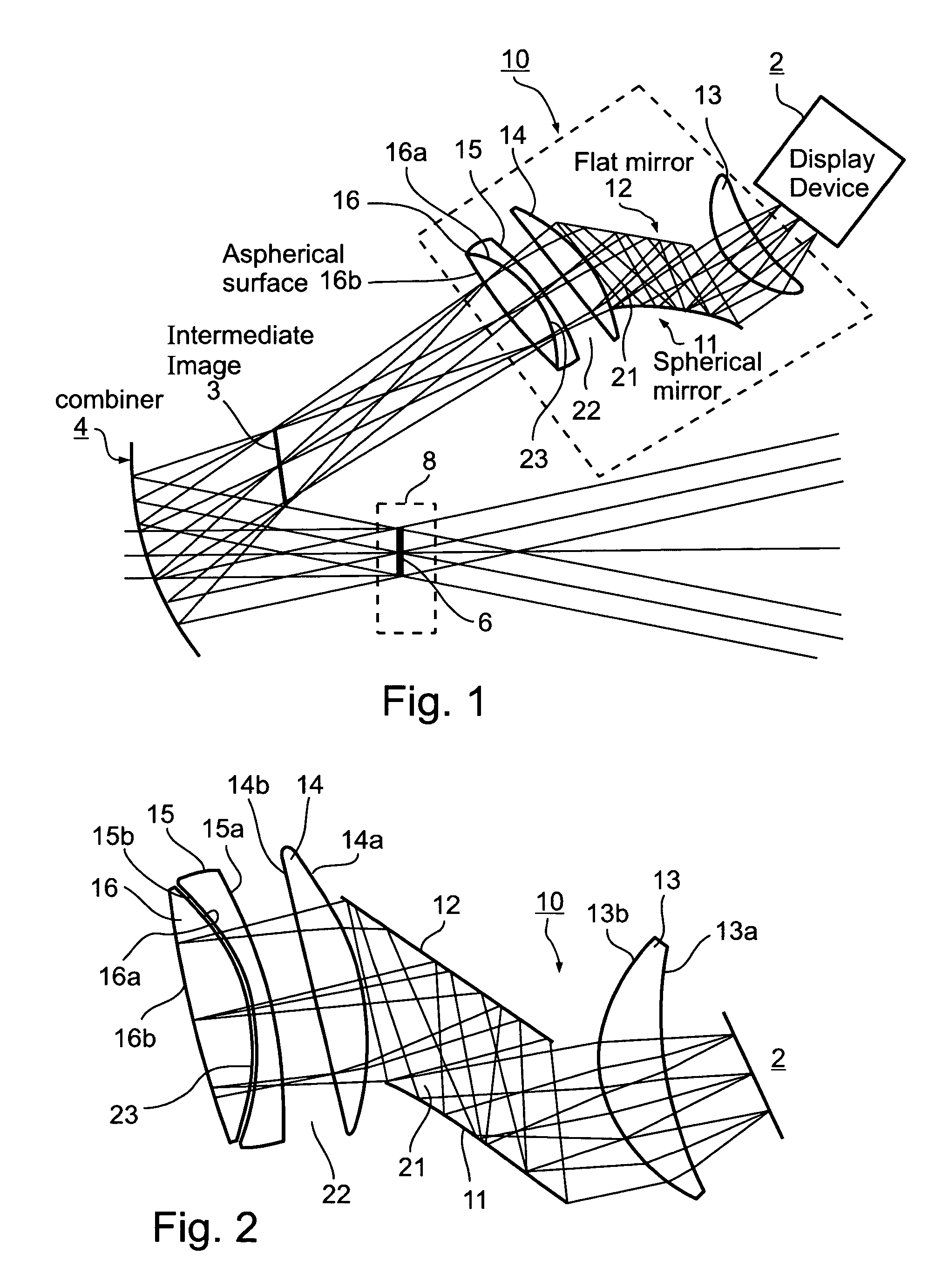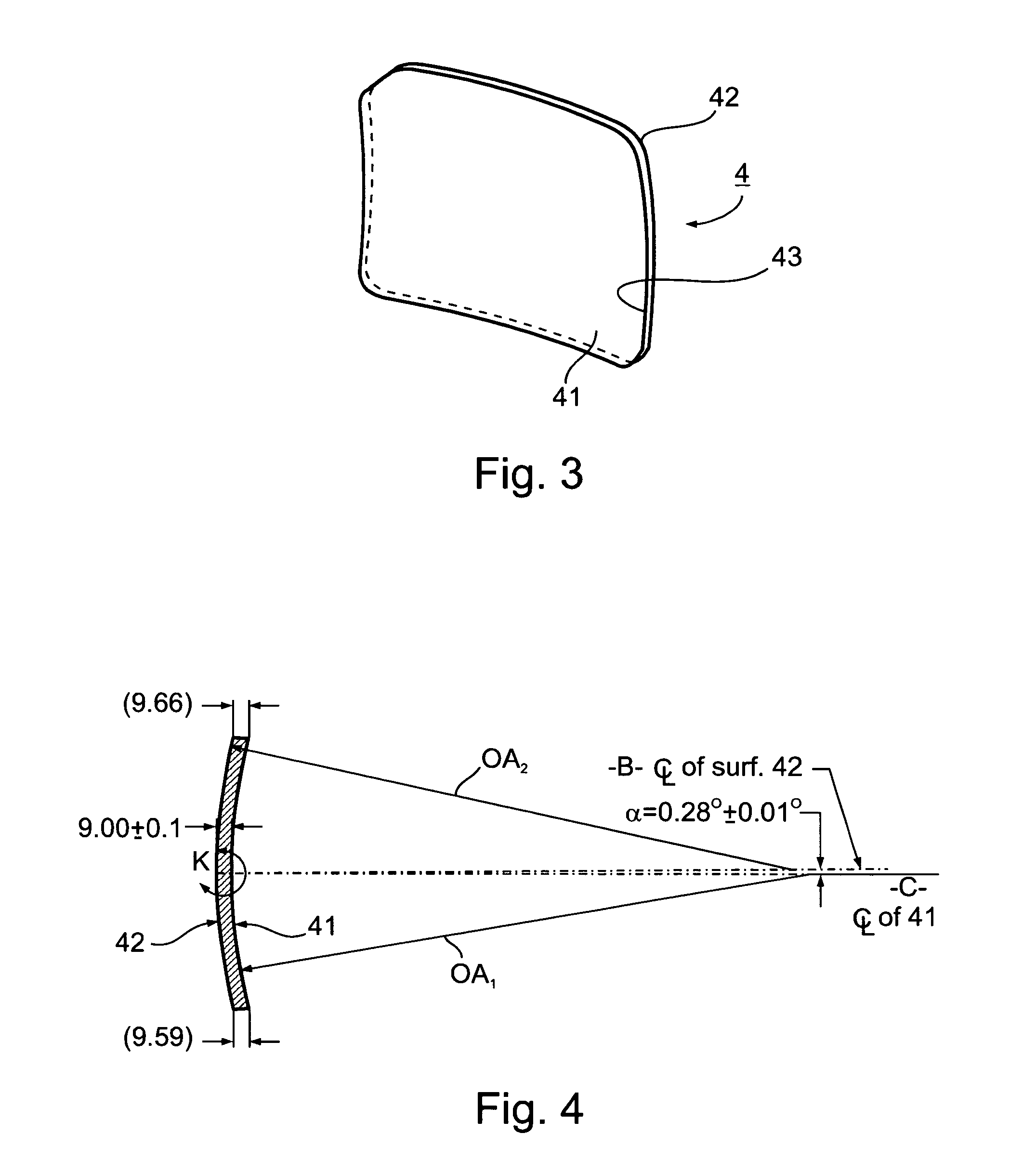Head-up display system
a display system and head-up display technology, applied in the field of head-up display, can solve the problems of difficult to correct standard designs, difficult to correct tilt power combiners inherently, and difficult to correct pupil-imaging hud designs, etc., to achieve the effect of reducing development costs and non-recurring expenses
- Summary
- Abstract
- Description
- Claims
- Application Information
AI Technical Summary
Benefits of technology
Problems solved by technology
Method used
Image
Examples
Embodiment Construction
[0023]The head-up display system illustrated in FIG. 1 includes a display device 2 for generating and displaying information to an observer, and a tilted power combiner 4 for superimposing the information displayed by the display device into the forward view of the outside world by the observer. Display device 2 may be a CRT, an LCD, or a similar device for generating and displaying information, such as aircraft information normally displayed on an instrument panel.
[0024]In order to provide a large instantaneous field of view to the observer, the information displayed by display device 2 is formed into an intermediate image in a plane 3 forwardly of the combiner 4 and reflected towards the eye of the observer. Plane 6 defines the location of the observer's eye-pupil according to the design eye position (DEP) of the respective head-up display system. Such systems are generally designed so that the DEP plane fits within a prescribed eye motion box, generally designated 8. The eye moti...
PUM
 Login to View More
Login to View More Abstract
Description
Claims
Application Information
 Login to View More
Login to View More - R&D
- Intellectual Property
- Life Sciences
- Materials
- Tech Scout
- Unparalleled Data Quality
- Higher Quality Content
- 60% Fewer Hallucinations
Browse by: Latest US Patents, China's latest patents, Technical Efficacy Thesaurus, Application Domain, Technology Topic, Popular Technical Reports.
© 2025 PatSnap. All rights reserved.Legal|Privacy policy|Modern Slavery Act Transparency Statement|Sitemap|About US| Contact US: help@patsnap.com



